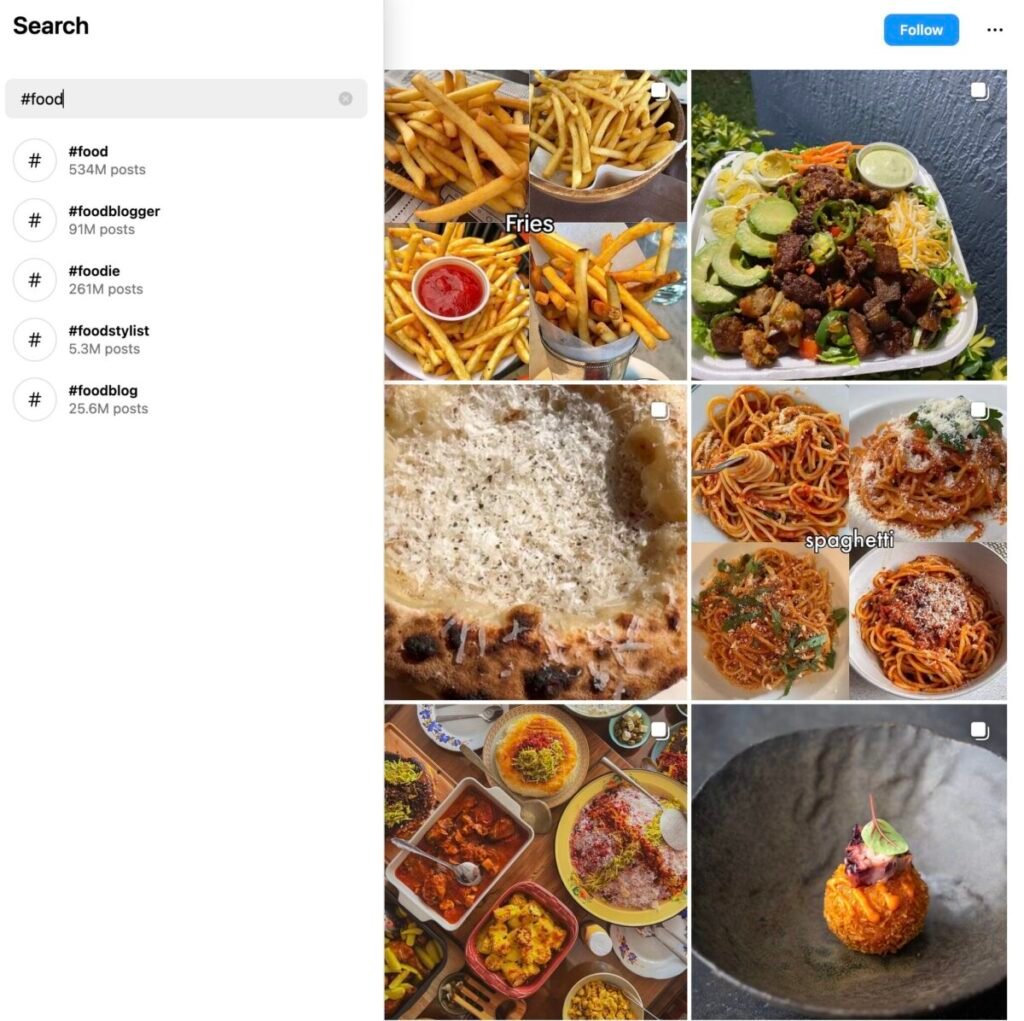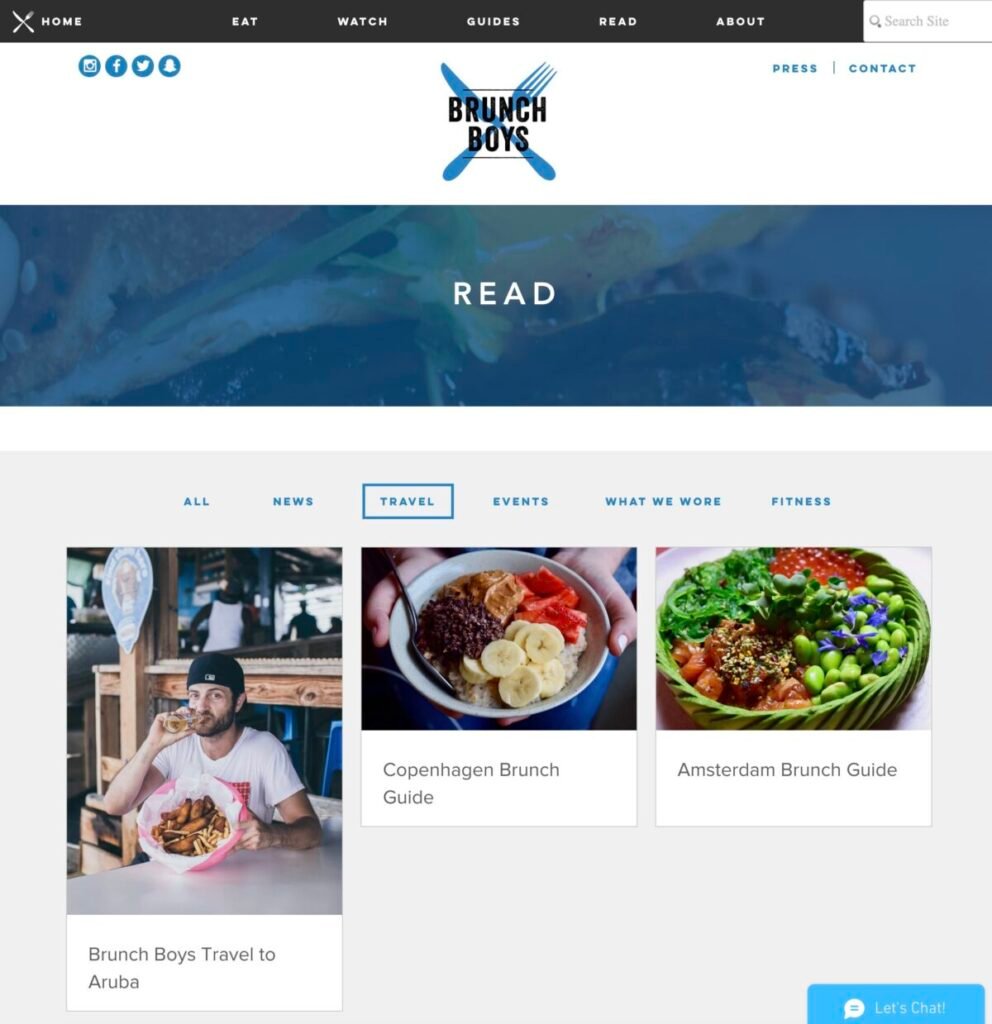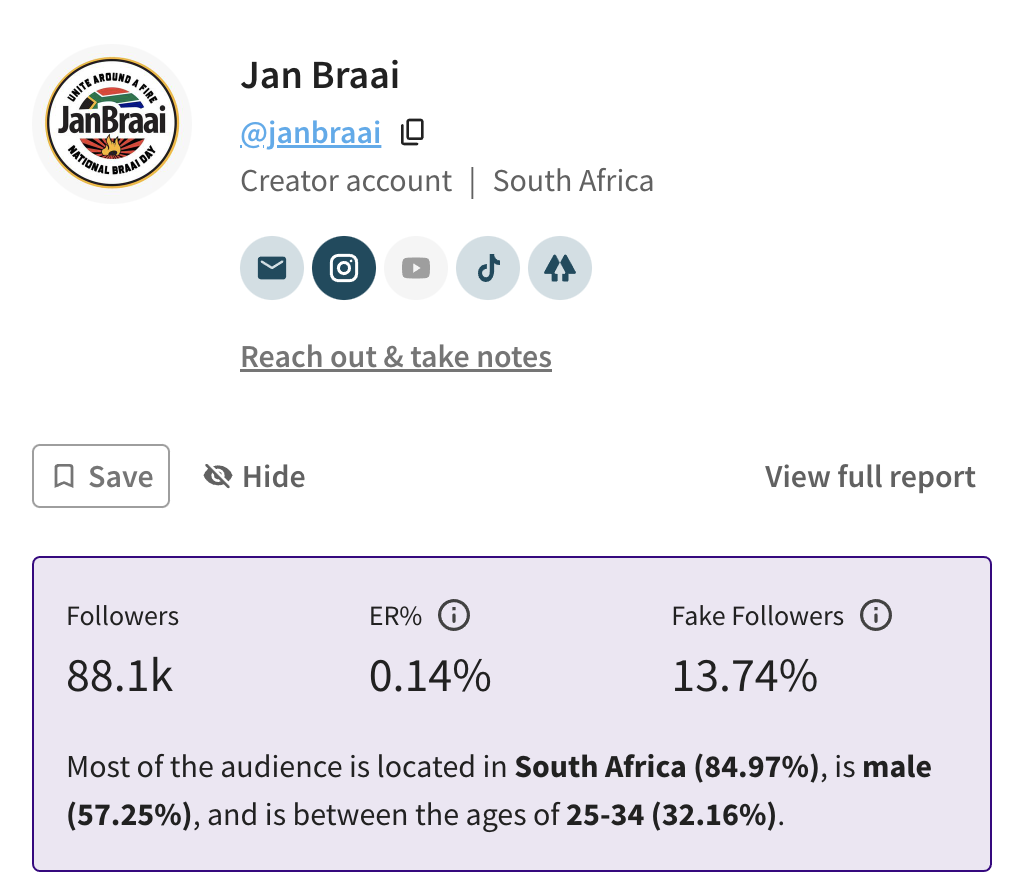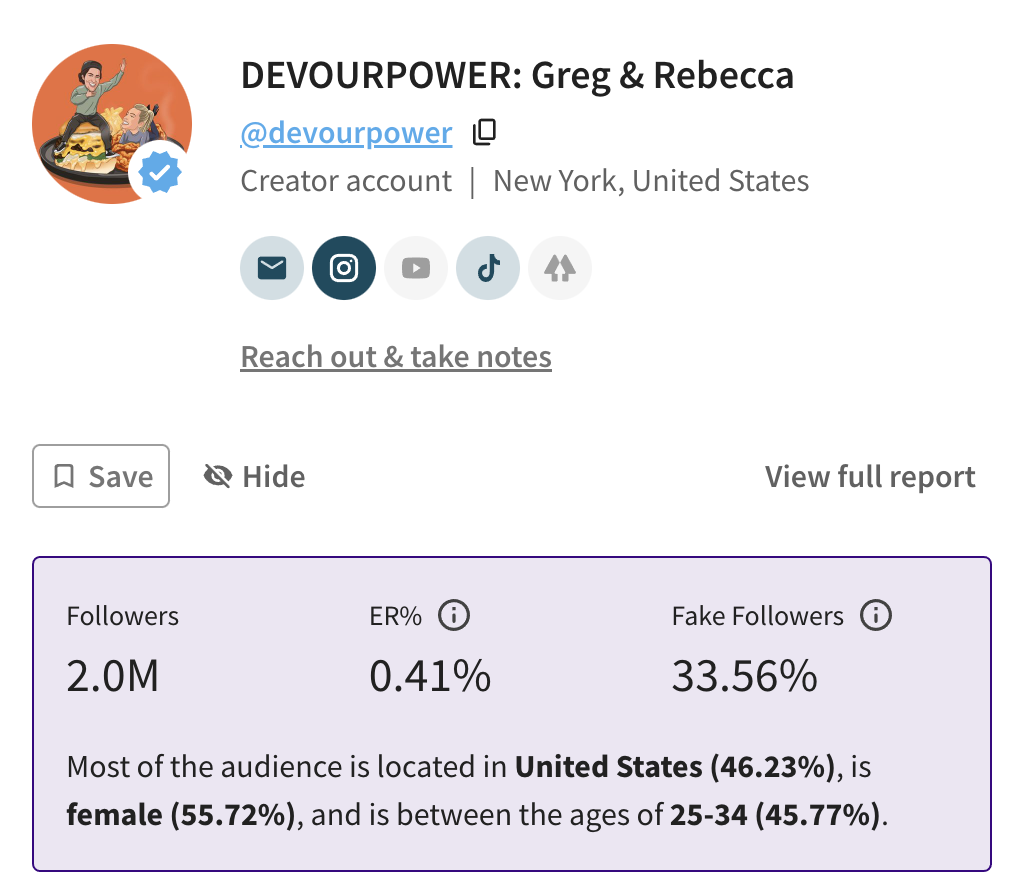Imagine getting a global, fast-food chain like Chipotle or Dunkin’ Donuts to add your favorite sauce or beverage to their menu? It’s not the stuff of dreams. It’s today’s dining culture recognizing the power of influencers.
In fact, you don’t necessarily need to be a food influencer. Charli D’Amelio, TikTok star best known for dancing than dining, regularly featured her Dunkin’ coffees in her posts. The donut company spotted the potential and added her favorite drink to its menu. Both sales and app downloads spiked afterwards, making Dunkin’ Donuts even more of a pop culture phenomenon.
@charlidamelio the best part of any day @Dunkin’ #dunkinpartner ♬ original sound – charli d’amelio
That said, our The State of Influencer Marketing 2024: Benchmark Report reveals that most businesses work with smaller influencers than Charli D. Plus, nearly 50% of businesses reimburse influencers with a free or discounted meal, making it possible for virtually any restaurant to work with food influencers.
Here’s a deep dive into strategies restaurants, food brands and marketing professionals in the food and beverage industry can use to leverage food influencers. From real-life content ideas to key campaign metrics you should monitor, continue reading to get a taste for what’s possible with influencer marketing.
The Rising Influence of Food Influencers in the Dining Industry
Combine the visual nature of Instagram along with its intuitive tagging features and it has evolved into a food-discovery tool. As of January 2024, #food has been used in 518 million Instagram posts, making it one of the most popular hashtags on the platform of all time.

Source: instagram.com
In terms of the number of posts, food and beverages is the third leading product category on Instagram. In the first six months of 2023, food and beverages were posted about on Instagram a massive 1.9 million times. After all, food is best meant to be shared and a social media platform like Instagram makes it easy to do just that. It’s an experience and platform built on the premise of sharing.
That’s only Instagram. Then, there are video platforms like TikTok and YouTube where food-related videos covering everything from trends to tutorials get shared. In fact, about 70% of Gen Zers in the US and UK have listed TikTok as their most valuable social platform for food recommendations. What’s more, 44% of US Gen Zers follow influencers who post food content, further underscoring that social media platforms have become a resource for anything food related.
As this content is often based on first-hand experiences, the creators behind the content are seen as trusted sources. What’s more, influencers, especially those in the food niche, are typically perceived as authentic and relatable.
They’re neither a biased traditional ad nor an elitist food critic. It’s their refreshing honesty that has transformed them from mere foodies into key opinion leaders, helping social media to replace traditional advertising for many diners.
Take the example of Chipotle.
In 2022, Keith Lee, a food critic, and Alexis Frost, a fast-food foodie, went viral with their quesadilla hack. There were more than 90,000 organic social mentions asking the brand to add the influencers’ hack to their actual menu.
Chipotle saw this as a hot opportunity to fast-track menu innovation and worked with the influencers to launch the new item. The result—3.7 million social engagements,10 times the social impressions, and a Shorty Award for the best food and beverage campaign.
@keith_lee125 #stitch with @keith_lee125 Chipotle “Hack” taste test part 2 💕Would you try it ? ORIGINAL VIDEO 👉🏾 @alexis.frost 💕 #foodcritic ♬ original sound – Keith Lee
How Food Influencers Shape Restaurant Perceptions and Reputations
Much of influencer marketing’s success is because it encourages visual storytelling. Influencers can tell their true experience to capture everything from small details like plating to the overall ambiance. After all, dining out is a sensory experience that’s hard to communicate through written word alone.
Plus, as they’re professional content creators, they’re experienced at creating high-quality images and videos to make the food look appealing. They know how to capture the crunch of a perfectly fried appetizer, or the slow pour of a rich sauce over a dessert. Yet, as they’re viewed as authentic, the content that they dish up is still viewed as believable.
At the same time, food influencers encourage other patrons to share their own experiences or join in on creative food-related challenges like a recipe hack. This way, they help to amplify the restaurant’s reach beyond that of their own following.
In fact, these influencer-generated images and videos can act as more than a way to wet their followers’ appetites. If they add a few sentences about the experience, the post turns into a review that serves as social proof to enhance the credibility of the restaurant.
@keilapacheco CHIPOTLE❤️🌯 IM SO SAD AL PASTOR IS GONE!!😩💔HAVE YOU TRIED THE NEW BRISKET??😋#chipotle#chipotleburrito#chipotlebrisket#chipotlemukbang#mukbang#mukbangeatingshow#mukbangs#food#foodie#foodvideo#foodasmr#eating#eatingshow#eatingasmr#asmr#asmreating#chewing#asmrvideo#eatwithme#bigbites#burrito#giantburrito#asmrsounds#queso ♬ original sound – Keila
Key Types of Food Influencers and Their Impact on Restaurants
Businesses and marketers in the food industry can work with more seasoned influencers or starter creators. Here’s an overview of what each of the main types of influencers can bring to the table.
Macro-influencers
Macro-influencers have between 100,000 and 1 million followers, giving them a much wider reach. As they have such a massive audience, they typically cater to a wider range of tastes which makes them a more suitable choice for restaurants that appeal to a broad demographic like burger joints, pizzerias, or coffee shops. Plus, as their content will be seen by hundreds of thousands, working with a macro-influencer makes more sense if your main marketing goal is creating brand awareness for a large-scale food event or product launch, for instance.
Jeremy Jacobowitz is a good example of a top-performing macro, food influencer. Going by the alias Brunch Boys, he shares his food adventures from all over the world on Instagram, TikTok, and YouTube.
In addition to his social media channels where he has a combined following of just over 900,000, he also has a website, “Brunch Boys”, where he features blog pieces on his culinary experiences for those that are more into good food blogs than social media content.

Source: jeremyjacobowitz.wixsite.com
Micro-influencers and nano-influencers
Micro-influencers have between 10,000 and 100,000 followers, while nano-influencers have between 1,000 and 10,000. Both these influencer types generally boast impressive engagement rates as they have developed a close relationship with their followers.
They’re also more specialized, choosing to focus on specific niches. Take for example, India Reynolds, one of the top vegan influencers on Instagram. Her Instagram account, Recipes from Reyn, has 30,000 followers and focuses on vegan food.
Because of their higher engagement rates, they’re a better choice for restaurants who are more concerned about landing more reservations and growing brand credibility than brand awareness.
As you would expect, they also charge less, giving small, family-owned or local restaurants the chance to leverage influencer marketing like well-known restaurant chains.
Local vs global influencers
In addition to follower count, you can also group influencers according to region. This criteria is especially important as most restaurants rely on actual foot traffic, which makes working with local food influencers a more sensible route.
Local influencers are deeply embedded in their community. They understand the local culture, trends, and preferences, making their recommendations highly relevant and relatable to their followers.
Take Jan Braai, for example. Based in South Africa, his content focuses on basically anything related to barbecue (referred to as “braai” in one of the country’s 11 official languages) which is at the root of South African culture. In fact, barbecue is such a big part of the country’s culture that he also saw it as an opportunity to start a national “braai” day initiative as a way to celebrate a Heritage Day, a South African public holiday that celebrates the country’s traditions and cultures.
Local influencers’ audiences are also typically concentrated in specific geographical areas. In the case of Jan Braai, 85% of his followers are located in South Africa, according to Modash, a top-rated influencer marketing tool.

While local food influencers’ influence is strong locally, if your restaurant aims to attract a diverse crowd beyond the local area, they might not provide the wide-ranging appeal you’re looking for.
Global influencers, on the other hand, have extensive followings spread across different countries and regions. Collaborating with them can dramatically enhance your brand’s visibility on a larger scale. A mention or feature from a global influencer can lend your restaurant a sense of prestige and exclusivity, attracting attention from food enthusiasts worldwide.
Plus, if your restaurant has goals beyond local borders, such as opening new locations, selling branded products online or landing international recognition, global influencers can help tap into broader markets.
Take DEVOURPOWER, for instance. While they’re based in New York City, according to Modash, their followers come from all over. Only about 46% of their audience is also based locally in the United States.

Proven Strategies for Leveraging Food Influencers to Enhance Restaurant Reputation
Once you’ve identified the best (food) influencers for your restaurant, here are ideas for your influencer marketing campaign strategy:
Authentic collaborations and organic storytelling
It’s easy for diners to spot when content is forced. To avoid coming across as inauthentic, food brands should work with influencers who genuinely love the food and align with the brand’s values. For example, if you’re selling beef hamburgers, working with a vegan influencer is in bad taste.
Storytelling should also be a core ingredient to these influencer collaborations. Aside from helping to build trust further, it also engages followers more effectively. You can, for example, ask influencers to share a story about their recent visit to your restaurant that emphasizes the experience.
To emphasize the experience and transparency, consider a kitchen tour or behind-the-scenes look at how the dishes get prepared. To see this in action, you can check out DEVOURPOWER’s content for Steam, a modern Chinese spot in NYC.
Seasonal and trend-based posts
To make influencer campaigns more relatable and shareable, restaurants can align their campaigns with seasonal menus, trending flavors, or a cultural event. Think sexy, salads with locally sourced produce to announce the arrival of spring, for instance.
This strategy is especially suitable for farm-to-table restaurants. For example, to help Farow’s, a farm-to-table restaurant located in a remote village in Colorado, ROOT, one of the leading food marketing agencies, regularly hosted influencers and created strategic pitches that had timely angles. They created content around themes like spring produce, Earth Day, and Valentine’s Day, and even Super Bowl viewing parties. They also jumped on trends like cacio e pepe.
For something more unconventional, you can draw inspiration from the social media stunt that Jellybean created for Burger & Sauce for Valentine’s Day. Their budget didn’t allow for working with mega stars like Ed Sheeran so they partnered with the next-best influencer—Ed Sheeran’s lookalike.
Ty Jones (the singer’s dubbelganger) enjoyed a Valentine’s Day meal with an Ed Sheeran “fan” at the burger restaurant chain’s flagship location while the carefully choreographed paparazzi drew attention to their “date”. Fans of the singer also started snapping videos, helping Burger & Sauce to get even more content. In just 48 hours, the campaign reached over 300,000 views.
User-generated content campaigns
To amplify the reach of your campaigns and diversify content, encourage influencers to prompt their followers to share their own experiences. It’s also to the influencers’ advantage as it can deepen their connection with their audience.
It could be as simple as ending posts with engaging calls to action (CTAs) like:
- “Have you tried this dish?”
- “Share your thoughts!”
- “What’s your favorite memory at this restaurant?”
- “Am I missing anything?!”
Influencer takeovers (in-person or virtual)
Letting influencers “take over” the restaurant’s social media for a day or co-host a live event, like a live cooking class, is great for driving engagement. Not only does it bring the influencer’s audience directly to the brand’s channel, but it also builds deeper engagement.
Content that works well for this strategy includes behind-the-scenes videos that give potential diners an insider’s view of your restaurant. Alternatively, you can simply ask them to share their favorite dishes. For example, if you serve breakfast, lunch, and dinner, influencers can cover their favorites for all three mealtimes during the one-day takeover.
Collaborative menu items or limited-time offers
Co-creating a special menu item with a food influencer is an excellent way to align the restaurant’s offerings with an influencer’s brand and audience. This way, you can create a buzz around your restaurant and draw in their followers too.
For example, The Halal Guys created a global influencer campaign to introduce its first-ever meatless gyro which was launched as a limited-time offer. With the help of Belle Communication, they identified over 80 influencers on Instagram, YouTube, and TikTok. The result—56,000 social engagements.
This campaign also serves as an example that you don’t necessarily need to work with only vegan influencers when you’re promoting meatless cuisine. They, for example, partnered with Jeremy Jacobowitz. While he’s not a vegan, he loves exploring new, alternative options like this limited-time menu item.
It doesn’t need to be a food influencer, though, either. If you’re a global brand like Dunkin’ Donuts that has the budget to work with mega stars like Charli D’Amelio, you can add their favorite items to your menu.
Influencer-generated reviews and tutorials
Reviews, recipes, or tutorials created by influencers (featuring the restaurant’s food) have a strong impact on consumer behavior. Aside from establishing credibility, this type of content also encourages engagement. For example, if potential diners add comments, you can use these to draw insights which you can use to improve your offering.
When going this route, allow influencers the creative freedom to craft content that feels as natural as your ingredients. Overly scripted or controlled messages will make the content less authentic.
Ideas include:
- Asking influencers to recreate their favorite dish at home
- Letting influencers use a dedicated hashtag
- Creating tutorials of how the restaurant adjusts a recipe to cater to special dietary offerings or explore a current food trend
For example, Bon Appétit’s Reverse Engineering and Gourmet Makes series are great examples of how restaurants and food brands can use tutorials to highlight certain dishes of products. In Reverse Engineering, Chris Morocco gets blindfolded and using only his sense of taste and smell, he needs to attempt to recreate the dish.
In Gourmet Makes, Clarie Saffitz gets a similar challenge. Viewers are taken on a journey as she attempts to make popular gourmet snacks like Skittles, Oreos, and Snickers. While she’s at least not blindfolded, trying to recreate mass-produced treats without the equipment makes for hilarious moments.
Tutorial-type content like these videos show that it’s possible to be informative and entertaining at the same time.
How to Measure The Impact of Influencers on Restaurant Reputation?
Measuring the impact of your influencer marketing campaigns on your restaurant’s rep calls for a mix of key performance indicators (KPIs) that look at engagement and conversion as well as sentiment. These include:
- Brand mentions
- Engagement rates
- Follower growth
- Reservations
- Foot traffic
- Online reviews
- Sentiment
Monitoring the number of times your restaurant’s name gets mentioned online gives you insight into if influencer partnerships have improved your visibility.
More brand mentions is a sign that consumers are taking an interest in your establishment, but to really get a feel for interest you’ll also need to measure engagement rates. You’ll want them to interact with the influencer-generated content. Likes, comments, and shares show that your content is tasteful.
Next, you’ll want to see that these likes convert into increased reservations which lead to an uptick in positive reviews. Track any spikes in reservations (and foot traffic) following influencer collaborations. An effective campaign should translate into more bookings, showcasing the influencer’s ability to drive consumer action beyond online interactions.
If you spot that influencers aren’t the only ones who are posting content about your restaurant that’s also good. User-generated content like restaurant reviews on sites such as TripAdvisor and Yelp further reinforce the influencers’ recommendation (that’s if it’s positive). So, look at the tone of content surrounding your restaurant (in addition to the changes in volume) to assess overall brand perception shifts post-influencer engagement.
Last Food for Thought
Which key ingredient does good cuisine and influencer marketing have in common? Authenticity.
Diners view food influencers as more credible and trustworthy than traditional ads. If an influencer had a great meal at a local restaurant, there’s an expectation that diners will experience the same.
Not even to talk about the hype that influencers can create around a restaurant. If a certain influencer dined at a restaurant, it becomes a must-try place.
Combining it with marketing strategies that drive scarcity and the fear of missing out (FOMO) further can help restaurants to create even more successful social media marketing campaigns. Think videos and vivid visuals featuring limited-time, seasonal dishes to celebrate the return or summer. After all, food envy is a very real thing.
Frequently Asked Questions
What does a food influencer do?
Food influencers share their culinary experiences, insights, and expertise with a large audience, primarily through social media platforms. They create content that engages their followers, ranging from cooking tutorials and restaurant reviews to food photography and recipe development. They can also collaborate with brands to promote products, restaurants, or services. These partnerships can take the form of sponsored posts, product reviews, or hosting events.
What food brands are looking for influencers?
From artisanal oils to plant-based products to gourmet coffee to your run-of-the-mill sweet treats, there are various types of food brands interested in using influencer marketing. Examples of food brands that have looked for influencers to market their products recently include PepperMate, We Olive, Lina Premium Coffee and Tastily.
What are typical rates for collaborating with restaurant influencers?
The rates charged by restaurant influencers are impacted by factors like the type of partnership, social media platform, and number of followers. For example, if you’re creating content for Instagram, TikTok, or Snapchat, the average costs for sponsored influencer posts are $10 per post per 1,000 followers, according to Sprout Social. For Facebook and YouTube, you’re looking at double that rate. That said, new micro or nano-influencers might even create content in exchange for a free meal.
What are creative ways to leverage social media influencers to promote a restaurant?
Here are some creative ways that restaurants can use influencer marketing to promote their establishment:
- Invite local food influencers to an exclusive tasting event that includes a behind-the-scene tour of the kitchen so that they can meet the chef
- Create a collaborative menu item with a food influencer
- Run a social media contest that the influencer promotes on his/her page
- Ask influencers to share exclusive discounts with their followers
- Allow influencers to take over your restaurant’s Instagram account for a day
How do you measure the success of influencer marketing for a restaurant?
Engagement is a key indicator of influencer marketing success. Pay attention to: likes, comments, shares, mentions, tags, and follower growth. These metrics help you gauge how well the influencer’s audience responds to your content. Also look at your website traffic. Spikes in website visits (specifically referral traffic from social platforms) that coincide with the influencer campaign indicate that your campaign is successful. Lastly, also check if your reservations (and online orders) increase after the campaign.
Is it more effective to work with local influencers or celebrities for restaurant promotion?
Depending on your budget and target audience, both local influencers and celebrities can be effective. The benefit of working with local influencers is that they often boast highly engaged and loyal audiences, all while charging lower rates. Plus, collaborating with local influencers allows you to reach niche markets.
How can influencer marketing boost brand awareness and customer engagement for restaurants?
Influencers have loyal followers because they’re viewed as experts or relatable figures. When influencers share their experience at a restaurant, it resonates with their audience much more genuinely than traditional advertising. This trust can lead to increased interest and reservations as followers are curious to experience the restaurant for themselves. Also, because of their reach and visibility, influencers have the ability to amplify a restaurant’s reach beyond its immediate area.
